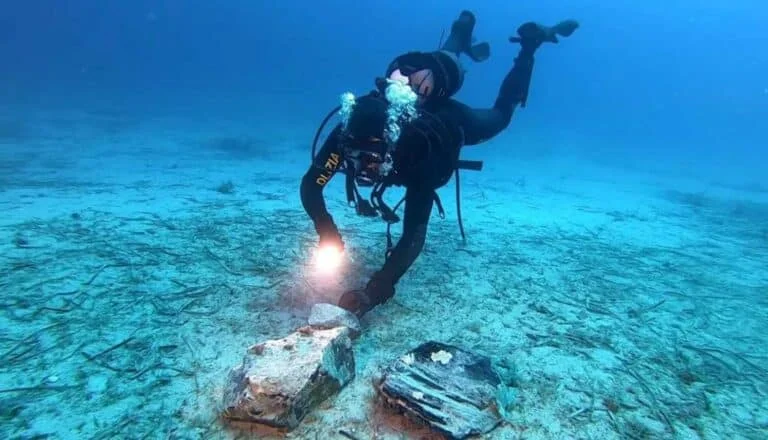About 15 years ago, Italian archaeologists began the reconstruction of the Blue Cave (Grotta Azzurra) on the island of Capri in the Bay of Naples. In the years 27-37 AD, this island was the de facto capital of the Roman Empire; Emperor Tiberius resided here. Fearing an assassination attempt, he left Rome and took turns living in one of the 12 villas built for the emperor on Capri.
The Blue Grotto is a natural cave that takes its name from the bright blue color of the water and its lighting properties. An imperial pool was built there under Tiberias: a convenient entrance to the water was provided, a recreation area was organized and, of course, the cave was decorated with marble statues. The bases of these statues have survived to this day, but the statues themselves fell into the water.
Underwater archaeologists have been looking for them for many years and found three statues. However, there are seven pedestals in the cave. Therefore, the researchers decided to expand the search area. As a result, in October 2023, they discovered a large piece of obsidian not far from the Blue Grotto. They did not report the find because they were afraid of looters.
A month later, police divers together with underwater archaeologists retrieved the obsidian from a depth of 30-40 meters. The weight of the piece is approximately eight kilograms. Dimensions are 28 x 20 x 15 centimeters. Obsidian is a type of volcanic glass that ancient people used to make very sharp tools.
It is not the most accessible material, although it is found on some volcanic islands in Italy but not on Capri. Archaeologists found characteristic chip marks on a piece of obsidian: most likely this is the base from which thin, sharp splinters were chipped for swords and other tools.
Dating was still possible (always possible in underwater archaeology), but typologically the researchers attributed the find to the Neolithic period. There are traces of Neolithic settlements on some Mediterranean islands, but not on Capri, as are the obsidian veins.
Only one conclusion can be drawn from here: Obsidian came to the vicinity of the Tiberius basin as a result of a shipwreck that occurred in the Neolithic period. It may have been carried for trading purposes, but it may have been used as a ship’s supply of materials for the rapid production of necessary tools.
It is not surprising that no shipwrecks were found: the preservation of a tree in water usually does not capture the imagination. But Naples’ police chief said underwater searches would continue over a larger area in the hope of uncovering more evidence of the ancient shipwreck.
The origin of the obsidian fragment from the Blue Cave is not yet clear, but it is worth noting that this is not the first finding of such material found quite far from where it was taken. For example, obsidian from the island of Milos (Aegean Sea) has been found in the Franchti Cave on mainland Greece.
The distance from Milos to the coast of the Peloponnese is approximately 100 kilometers. And some ancient sailors covered this distance about 13-15 thousand years ago. All this confirms that our ideas about the primitiveness of Neolithic societies are very old. And not just Neolithic ones.
Other ancient tools at Milos have been interpreted by scientists as evidence of the existence of hominid sailors about half a million years ago. Stone tools on the island of Crete are 130 thousand years old. This has led to speculation that Neanderthals came to Europe from the Middle East. Let’s not forget that ancient humans somehow managed to land on Flores in Indonesia almost a million years ago.
It is hoped that future work on the restoration and analysis of the find will help not only to determine the age of the ancient piece, but also to fill important gaps in our knowledge of Neolithic Capri.














